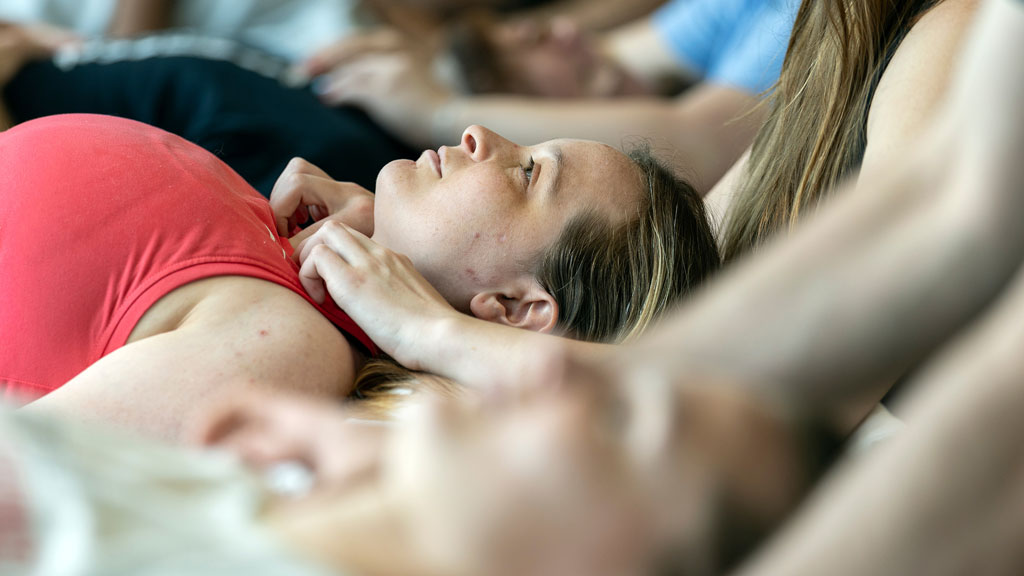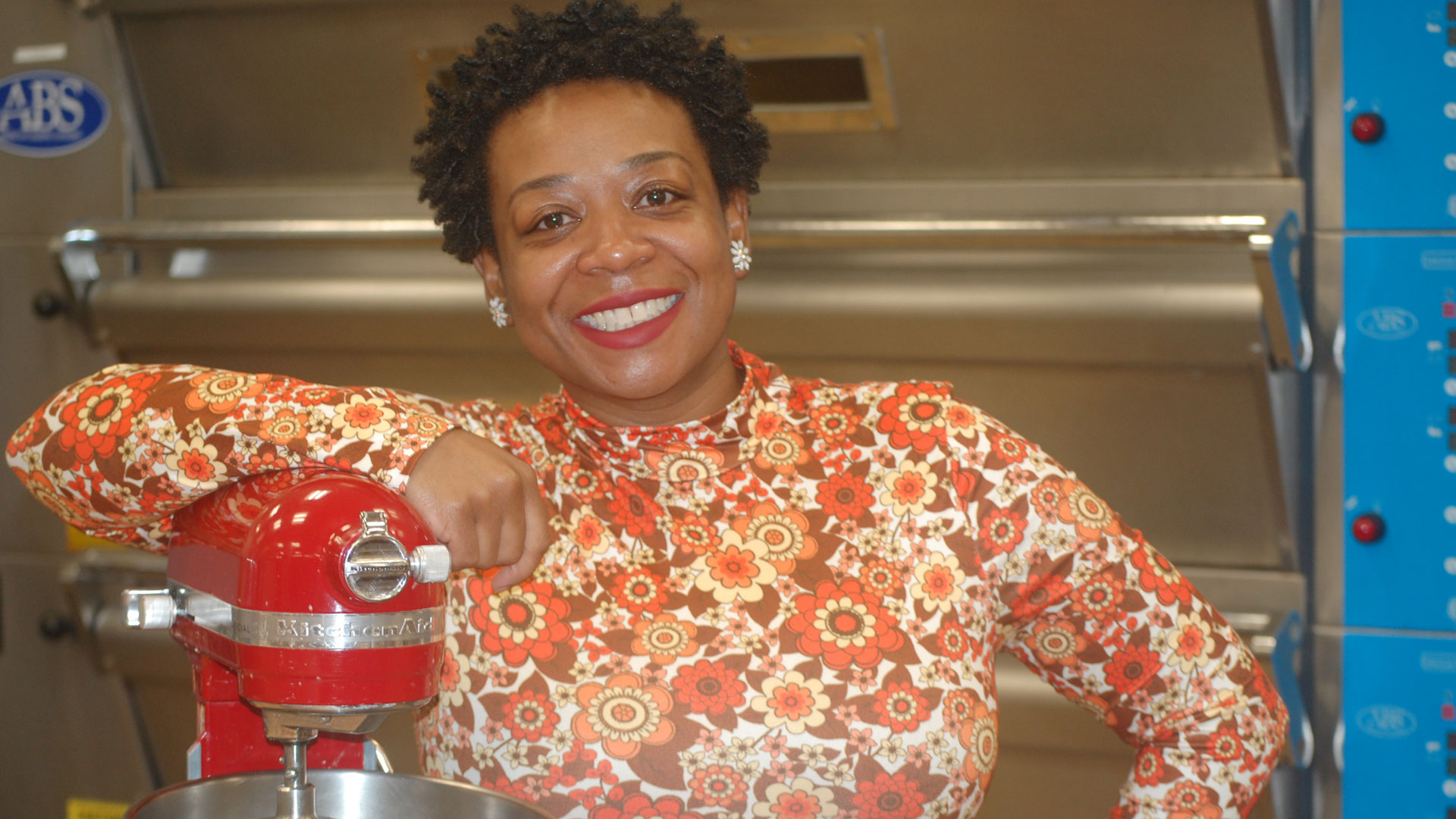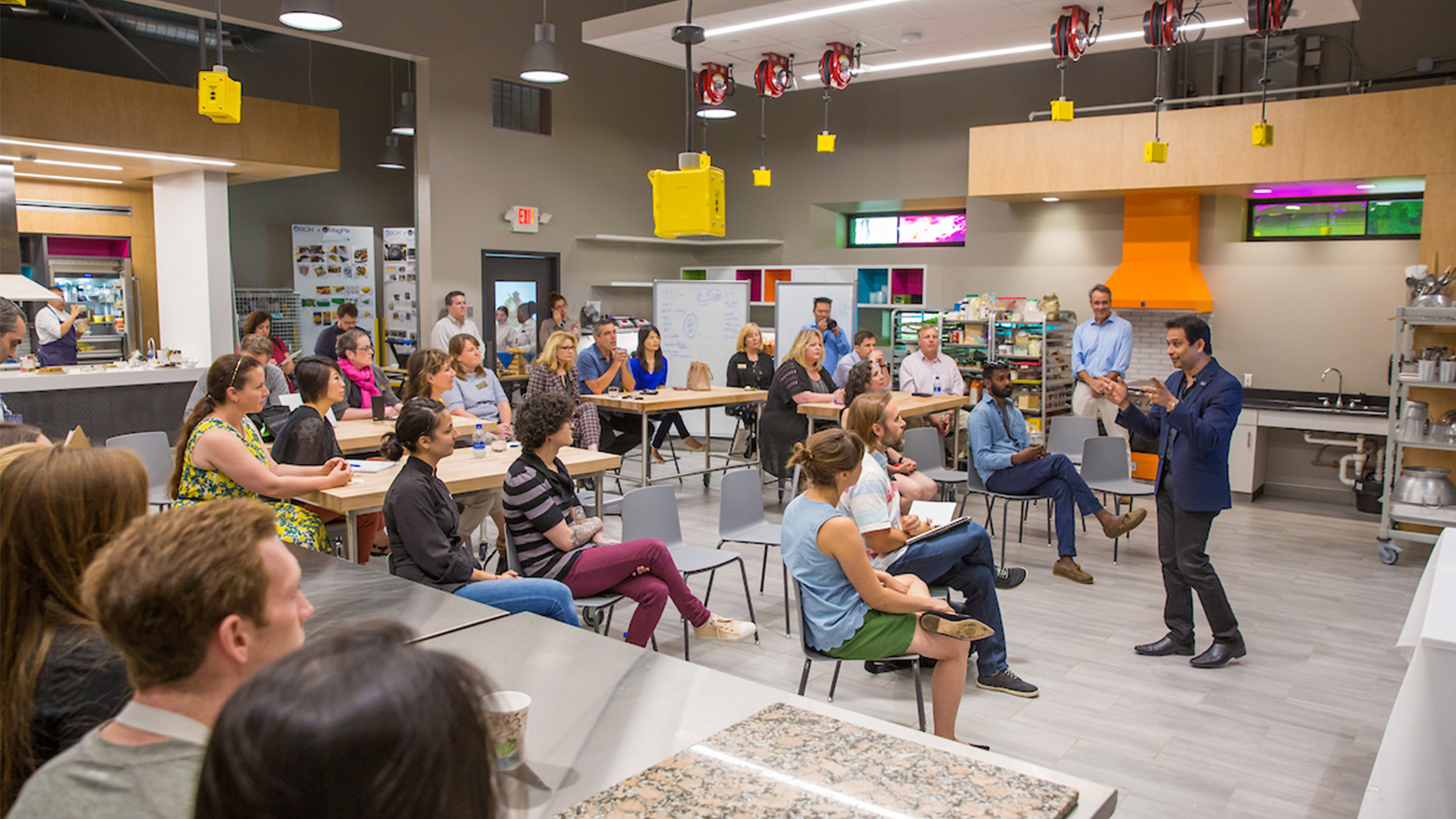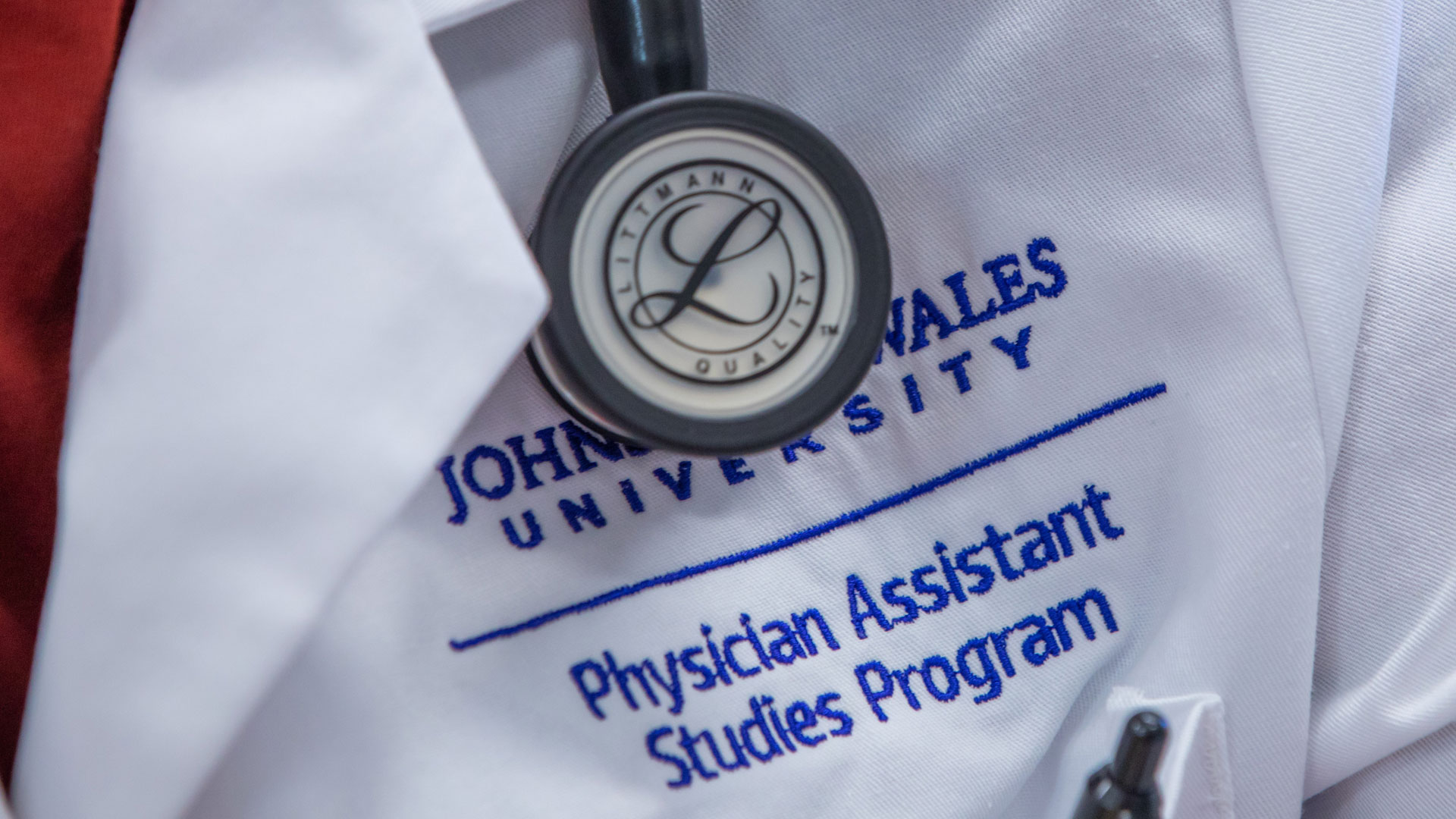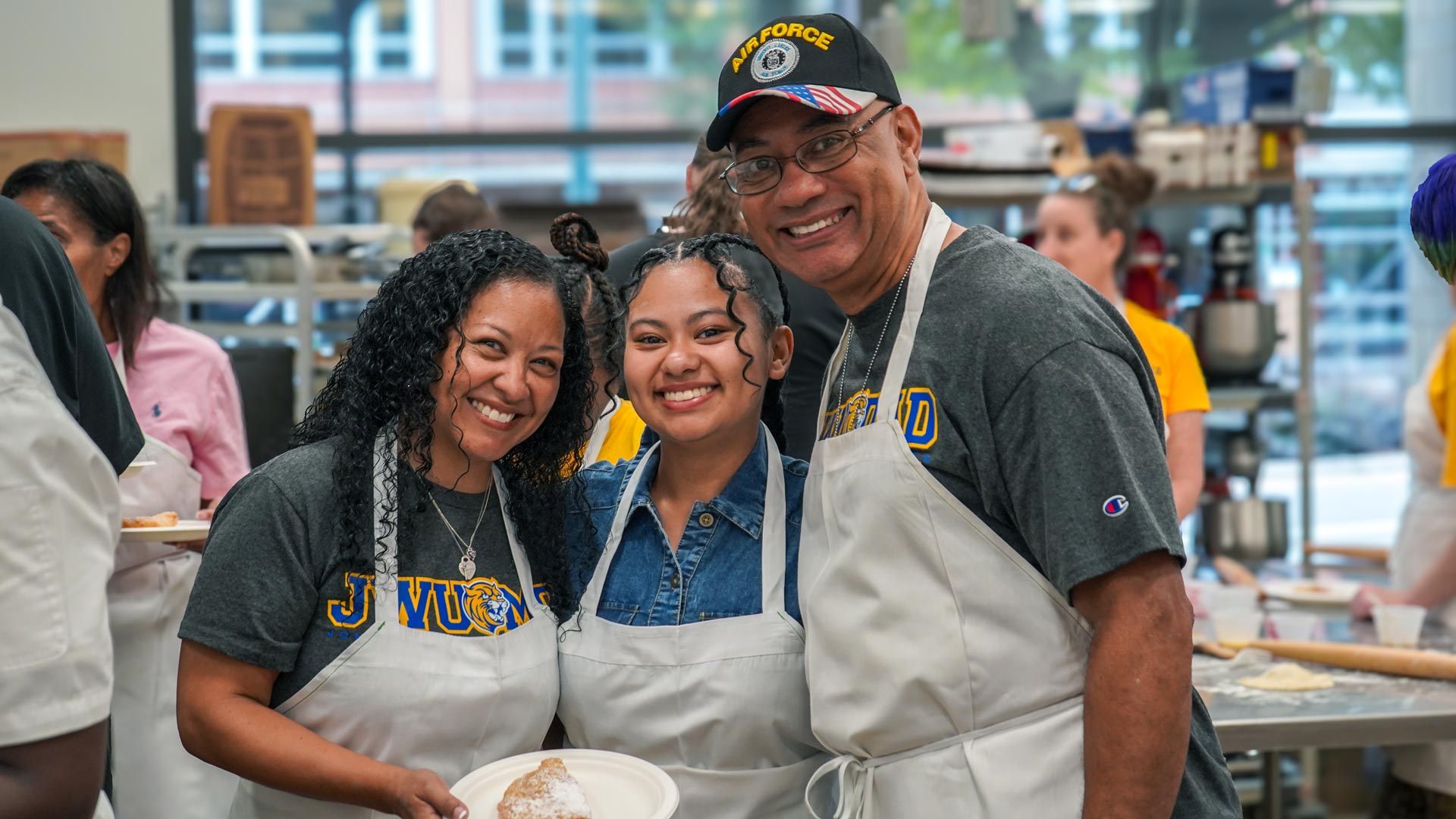Students Are Talking: New Doctor of Physical Therapy Program
Becoming a Physical Therapist (PT) is a smart career move in today’s healthcare field. There has been a shortage of PT practitioners in the United States since 2022 that’s projected to run through 2037. During that same time, the demand for more PTs is forecasted to grow by 14.7% — faster than the 8% population growth rate.*
To embark on a career as a licensed PT, a Doctor of Physical Therapy (DPT) degree is needed. Just recently, Johnson & Wales University launched a new DPT program at its Providence Campus with an inaugural class of 20 students.
Abigail Griffin '27, Siddharth Koka '27 and Tatyana Boiano '27 — students in the program’s first cohort— shared why they aspire to be a PT, why they chose JWU’s DPT program and what their impressions are of the program so far.

Abigail Griffin ’27
Abigail Griffin is from Massachusetts, earned an undergraduate degree in exercise science and gained experience working in an outpatient clinic as a rehabilitation aid before coming to JWU.
Why Physical Therapy?
I was an athlete in high school and know a bit about athletic training. I also want to be involved in healthcare and helping people out. I started working as a rehab aid and just fell in love with it. I assisted patients with exercises and helped with scheduling. I found it really fulfilling to work with the patients, one on one.
Why JWU’s DPT Program?
One of the main reasons I chose JWU was the faculty I met after being introduced to the school by a PT I had worked with at the clinic where I worked. She told me JWU was starting a program, and I might want to look into it. It was also close to home for me. So, I hopped on a Zoom call with a faculty member, and they answered all my questions and scheduled me on a tour of the facilities and classrooms. When I visited, I could see the excitement and it's been the same energy since I got here.
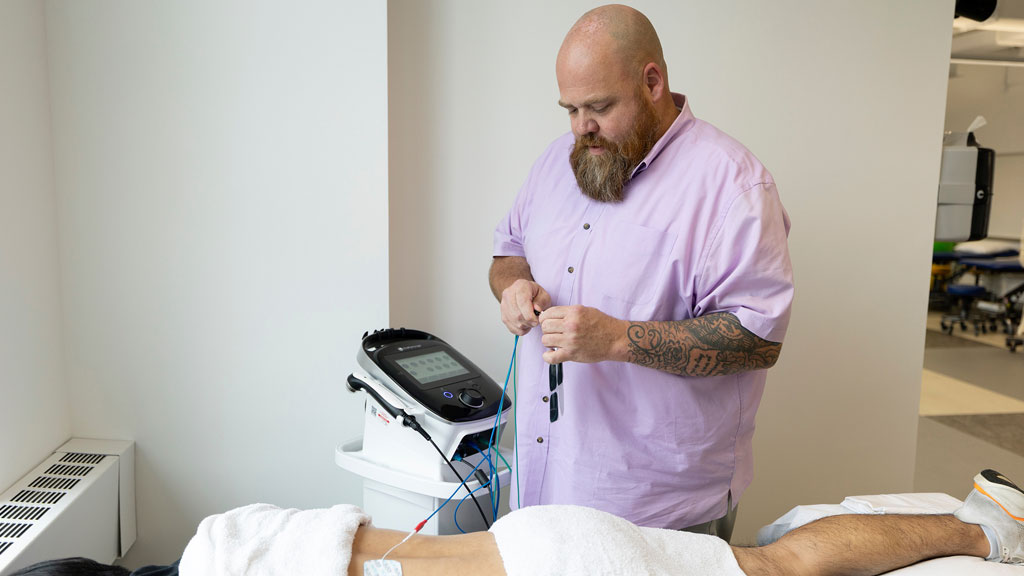
DPT Faculty
Our faculty have been there for us since day one. Every one of them has been the best and the students all have great relationships with them. You can tell they really care about us. Even when we’re done with class, we’ll see them outside, say hi and they’ll ask about our day. They want the best for us and our success.
Labs and Facilities
The facilities we have access to — our anatomy lab, our palpation lab — are great. We get hands-on experience with all this new equipment. We have cameras and monitors that help us see what's going on in the labs. There’s a lot of high-tech equipment that helps us stay relevant with what’s happening in the world of PT. Being able to experience all this so early on in is crucial for our careers as clinicians.
We have access to cadavers, which some schools don’t, so we’re very fortunate. We’re able to actually see human anatomy. We work a lot on the outside of the body, but it’s vital to know what's going on in the inside as well. In the palpation lab we have patient tables that most of us will use in a typical, outpatient clinic.
Being Part of a Cohort
I have loved being part of a cohort so far, genuinely, since day one. We’re there for each other, we’re friends and we love to hang out and do schoolwork together outside of classes.
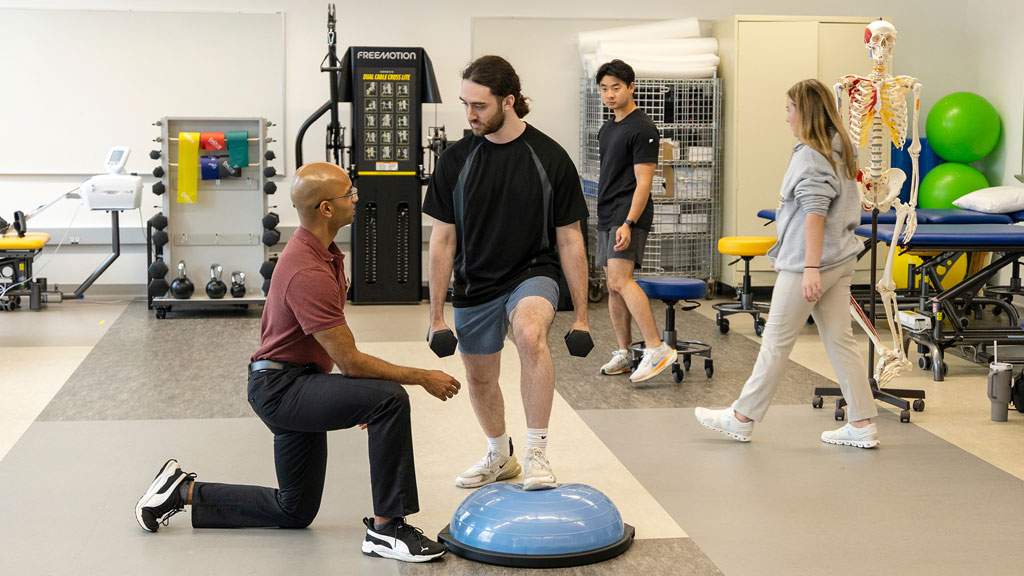
Siddharth Koka ’27
Siddharth Koka of Massachusetts is originally from India and has worked as a personal trainer, in corporate wellness and as a project manager. After a job layoff he wanted to get back on track to become a PT as he had originally planned.
Why Physical Therapy?
I’ve always been about health and exercise. Then, when my paternal grandparents suffered from falls, preventable falls, I realized there weren’t a lot of PTs who spoke our language and could have helped us do things differently and have more time with them. A big reason I wanted to go into PT is to help as many people as possible who look like me and come from my background, to be able to have more time with their own grandparents and grandkids.
Why JWU's DPT Program?
I was living in California and moved here for this program. My wife, Claire Coffrin-St. Julien ’13, a graduate of the B.S. in Culinary Nutrition program, told me a new DPT program was starting here. She has nothing but good things to say about how JWU gets people ready for careers and professional life.

DPT Faculty
One thing faculty have made very clear, is that if you struggle, all you have to do is meet them in the middle and they will do everything to help you get you to the point where everyone else is. They offer so much of their time and are always available on email.
Labs and Facilities
In the cadaver labs, the cadavers are not like the ones in my undergrad course that we were not allowed to touch. Here, we are able to manipulate them, and they look more like real people. Having this opportunity is an ultimate privilege. And the palpation labs, with all the tables and tools — everything we could need is an arm’s distance away, which is vital because that's what it will be like in the field.
Being Part of a Cohort
The cohort is a must. At a lot of other schools, especially in India, it’s very competitive. But here, it’s not like that and no one has to be at the top. In my personal statement on my application to JWU, I wrote, “I’m not succeeding unless the cohort is succeeding.” Being part of a cohort, especially one that’s so diverse and mixed in experience, ages and where we're from, really helps. We get to see how other people think, how things apply to certain groups and how everybody has their own way of sharing knowledge that helps the entire cohort. It’s close to how it will be when we’re working, because you’re likely to be dealing with other PTs or PT assistants.
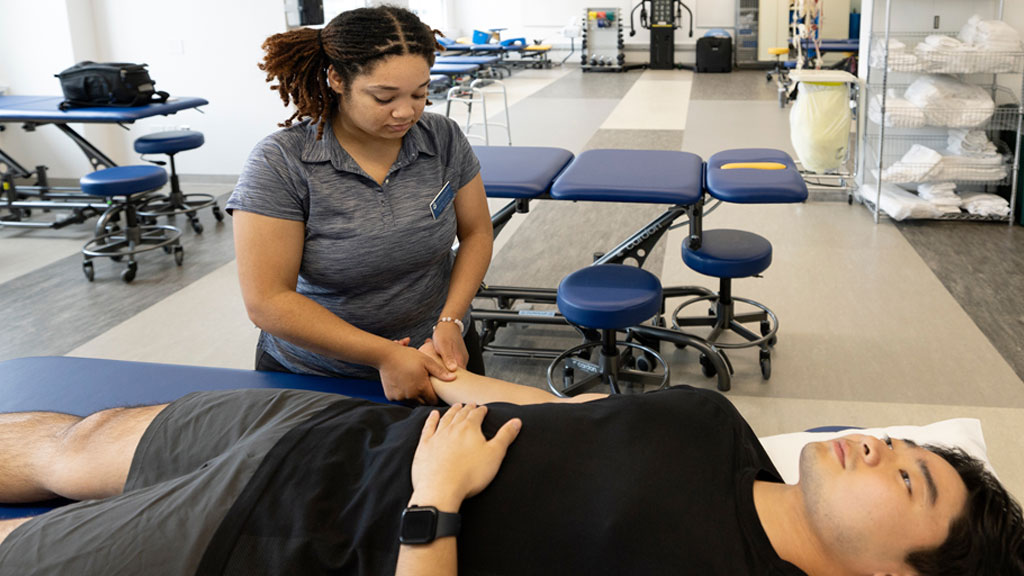
Tatyana Boiano ’27
Tatyana Boiano, from Rhode Island, took part in several athletic programs in middle and high school. As a college undergrad she majored in health science with a minor in human movement sciences.
Why Physical Therapy?
When I was in eighth grade, I fractured my hip. My PT was great and knowing I would get back to where I needed to be because of PT was helpful. I've always wanted to help people, and I shadowed a PT, and it felt so rewarding because you’re the one helping people get back to what they want to be doing, feeling better and in less pain.
Why JWU's DPT Program?
During open house I saw all the facilities — the simulation lab, the Occupational Therapy (OT) pediatrics lab, home lab and hospital simulation lab. I also saw the cadaver lab. I was excited to have access to all these, and some were brand new. I also like the program’s schedule, taking only two classes at a time.
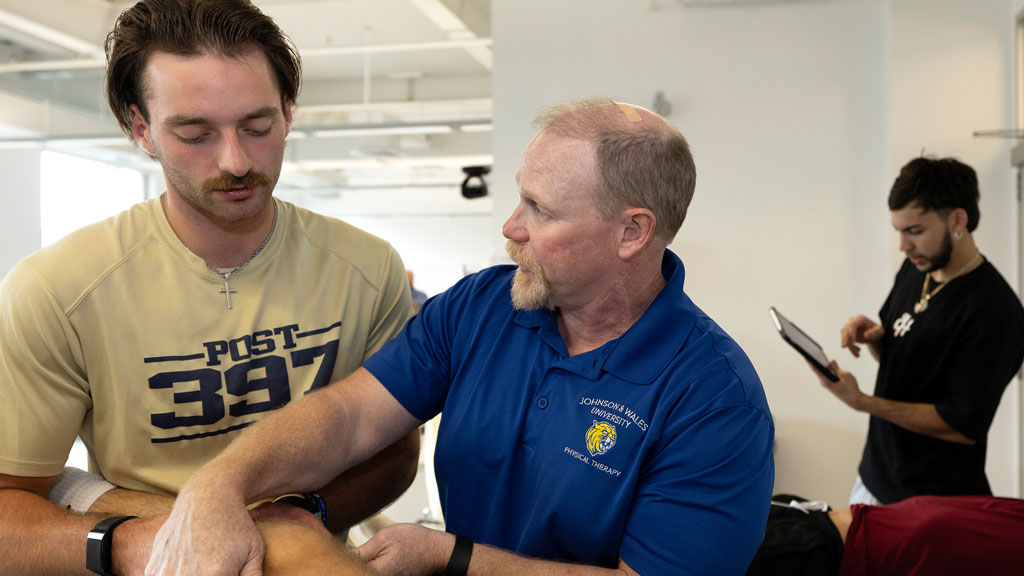
DPT Faculty
At orientation I met some of the faculty including Assistant Professor Sandra Gibson, who is especially helpful making sure we’re comfortable with what we’re working on. The same goes for Associate Professor Justin Laferrier, Assistant Professor Emily Berthelette, Associate Professor Adam Thomas and Assistant Professor Kevin Pozzi. They are all super helpful.
Labs and Facilities
Having access to a cadaver lab and palpation lab for our anatomy course is so helpful. I’m more of a kinesthetic learner and need to learn hands on. The faculty help us get through everything we need to do. Using the palpation lab was the first time we did hands-on work with each other and learned about how the muscles move, which I thought was impressive.
Being Part of a Cohort
I like that there’s only 20 of us, and we already know each other well. Some students stay after classes to study and work together. It’s a nice feeling, like a community, and you know that they’re willing to help you, it’s not a competition.
